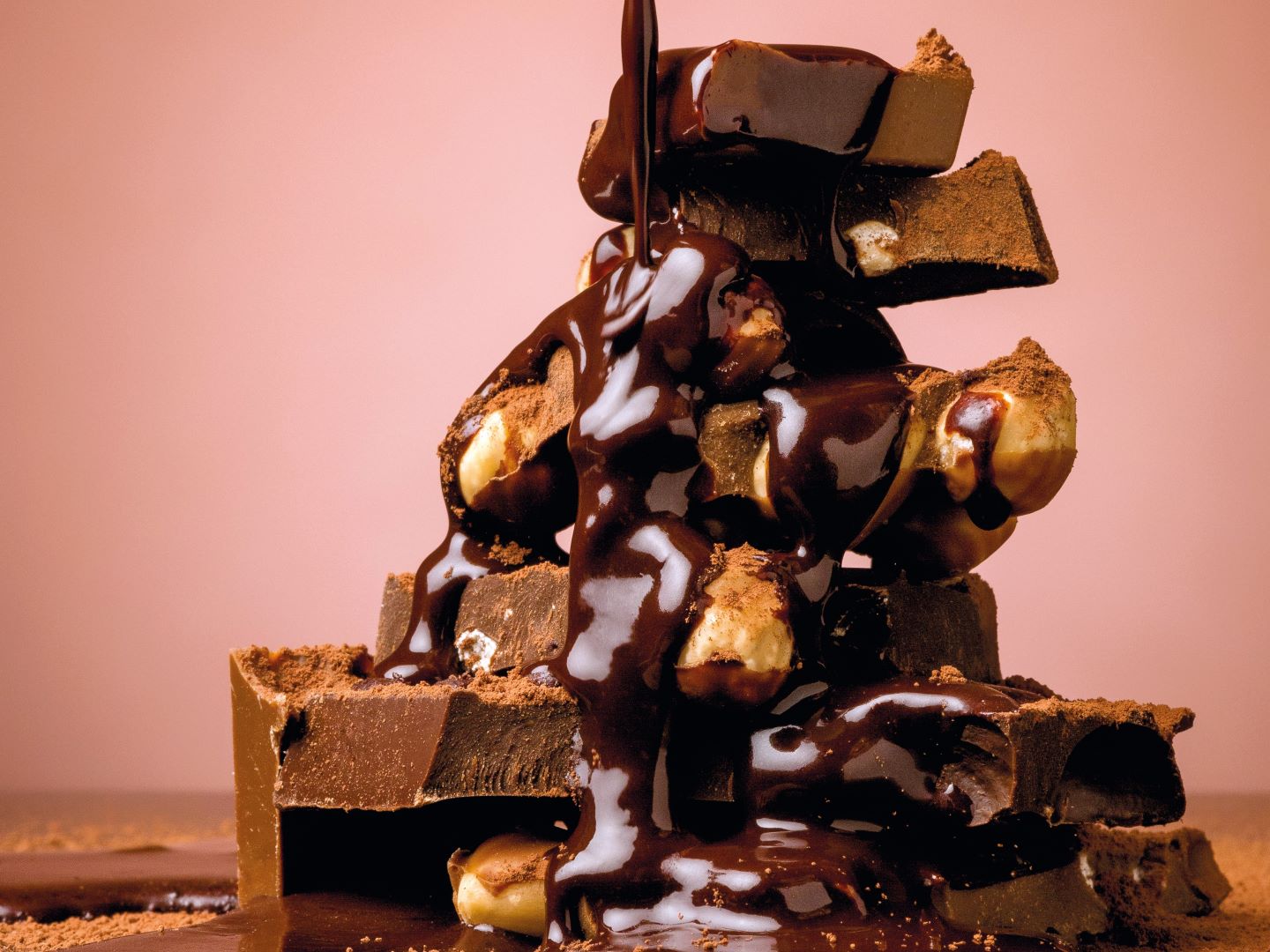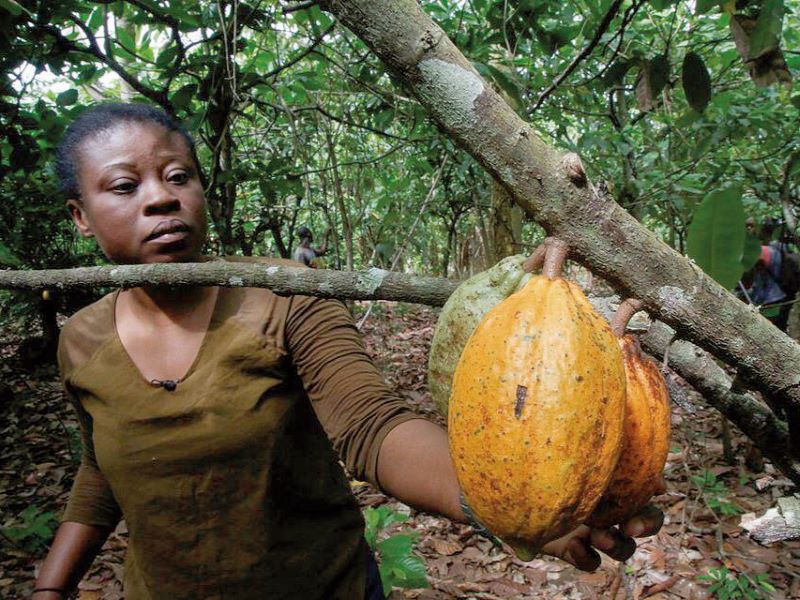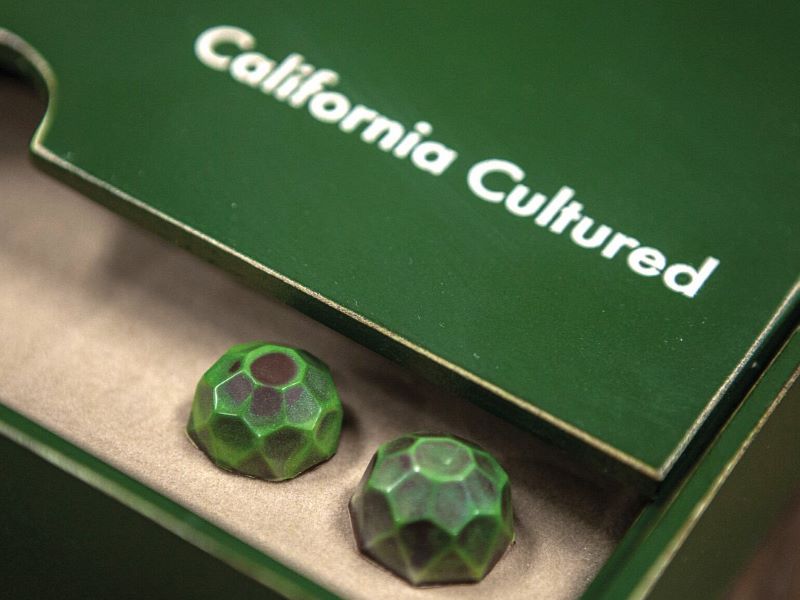
A supply crisis in Western Africa has darkened the outlook of cocoa, whose prices inflated to 44-year highs towards the end of last year.
If we had followed Alain Ducasse’s counsel and allowed our palate to ripen, we would have learnt from the dessert specialist and France’s premier culinary authority that chocolate is not just a bean-to-bar experience. Chilled, it forms a hardened surface like a winter lake on a warm tart. Stir it in a pool of cream and you will arrive at ganache, a glossy glaze that scaffolds the classic devil’s food cake, which courts the lusty gaze of anyone it passes on the way from kitchen to dining table. For something more dignified than a tall wedge of (delicious) darkness, the adaptable ganache can be flavoured with citrus peel or spices before being hand-rolled into marbles of truffles that make fanciful gifts.
Chocolate has yielded recipes and satisfied cravings that feel like healing, a gift in process and result. So addictive is this fudgy morsel that experts have likened its properties to the brain chemicals of a person in love. However, sugar fiends may soon have to look back at their favourite treats nostalgically as cocoa is standing up to a new heat that seems to threaten its worldwide production.
A supply crisis in Western Africa has darkened the outlook of cocoa, whose prices inflated to 44-year highs towards the end of last year as a widespread rot induced by climate change was hurting crops across the Ivory Coast and Ghana. Poor weather in both countries, which together produce about two-thirds of the world’s cocoa beans, has ravaged lands and decimated output.
This devastating outcome was attributed to El Niño — a climate pattern that occurs every three to five years caused by unusual warming of surface waters of the tropical Eastern Pacific — which brought unseasonal heavy rainfall to the region and then dry heat. According to a recent forecast published by the International Cocoa Organization headquartered in Abidjan, the Ivory Coast capital where agricultural investments are meagre and rains unaccommodating, the world production of cocoa beans in the current crop year will decrease by 11% to 4.45 million tonnes.
ivory_coast_is_one_of_the_biggest_cocoa_suppliers_in_the_world.jpg

Inflation, or more accurately, shrinkflation, is looking exceptionally sticky in the confectionery aisle of the grocery store. With cocoa trading about US$4,000 per tonne compared with US$2,600 per tonne just a year ago, giant chocolate manufacturers like Hershey and Mondelez International (owner of Cadbury) passed on these costs to shoppers. Not only did its year-on-year profit fall by 11.5% during 4Q2023, but its business was so badly affected that it had to cut 5% of its workforce. Soon, the world’s biggest chocolate maker, Barry Callebaut — the Swiss conglomerate credited for creating the first “ruby chocolate”, a pink-hued, fruity variation redolent of berries — would lay off 18% of its workforce, or 2,500 people.
Consumers are dealing with an unsavoury reckoning: What sweetens their adversities is bitter to the people who produce it. Without farmers, there is no chocolate — no creamy gelato, no molten lava cake, no happiness — and the economics for them can be punishing. It was not too long ago when a study by the French Development Agency revealed that farmers in the Ivory Coast earn roughly US$1 per day, below the World Bank’s threshold of absolute poverty. Lower incomes also contribute to the use of child labour in the fields. Although multinational food and beverage corporation Nestlé has designed an extensive “Cocoa Plan” to equip and empower farmers with better crop husbandry skills to generate high-yielding and disease-resistant plants, manufacturers and restaurateurs are still seeking sustainable and ethical ways to harvest these pod-shaped gems facing multiple existential threats.
Silicon Valley may just have the solution. California Cultured, a start-up based in Davis, Sacramento, has created the world’s first cell-cultured chocolate bar grown in a low-cost environment without deforestation and exploitation. To make it, scientists isolate individual cells from cacao plants with the best organoleptic properties, cultivate them in fermentation tanks that mimic rainforest conditions, and ground the roasted versions into chocolate. When it is added to candy or cookies, the end result tastes almost like the real deal because most of cocoa’s flavours come from how beans are processed.
Real-life application is already underway. Just last month, Meiji Holdings Co, Japan’s top chocolate and yoghurt maker, inked a 10-year commercial partnership with California Cultured, after investing in the US start-up in 2021 to promote its Meiji Cocoa Support programme aimed at advancing farmers. Even in Asia, cocoa is built on a fragile supply chain, though one that seems to be holding up for now.
meiji_holdings_co._has_reinvested_in_us_cell-based_cocoa_start-up_california_cultured.jpg

We shudder to think how chocolatiers will react to the news that the world’s chocolate supply could be forever on the decline and sources may one day originate from a petri dish. But the same approach is already behind lab-made meat, which is lifting off the pages of sci-fi novels and, in the foreseeable future, making its way into our homes. Imagine a gleaming vision of a world just beyond the present, where food is abundant and affordable without taking a toll on Mother Nature. Call it utopian — but altruism too. Such technical acuity and innovation conserves water, drastically reduces gas emissions and preserves vulnerable species. It is an escape hatch for our own excesses. It is not the cow, but the how.
The idea of recreating cocoa in a laboratory still resides in the realm of maybe. Having said that, no matter the absurdity, technology is forcing us to rethink the food we eat. If we live in a world populated by analogues perfected in a test tube, where is the joy of savouring something unpredictable in a way only nature can dish up? Just like coffee, every chocolate bean has the potential to express wildly varied flavours that reflect both genetics and a particular terroir. Zeroing in on these diverse qualities can engender a deeper appreciation for cocoa’s origins and operations behind the scenes.
While science has proved that even the simplest indulgence is not immune to the harsh realities of supply and demand dynamics, it has also illuminated a key truth about the mind and a confection so reassuringly familiar: Our senses do not work in isolation but in unison. Whether you have the common habit of methodically nibbling off the exterior of a Mars bar before starting on the caramel, or tackling a Sachertorte with surgical precision, slow down and savour these precious pleasures before they all melt away.
This article first appeared on Mar 18, 2024 in The Edge Malaysia.


